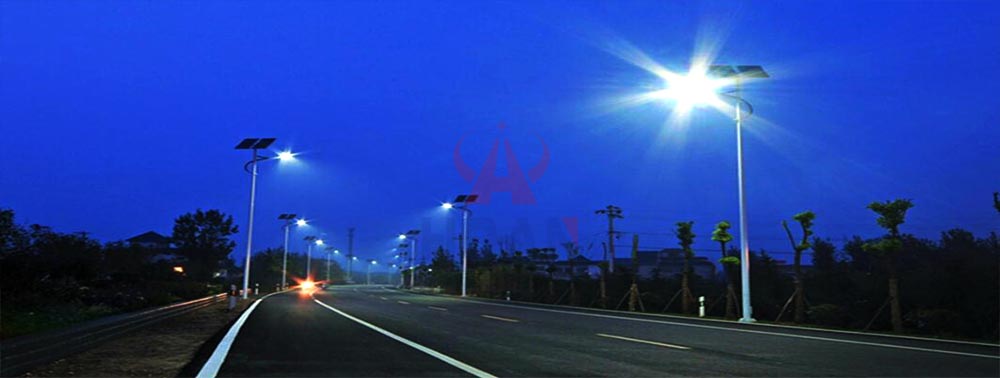The application of
Solar Street Lights on highways has a series of advantages and disadvantages, which I will elaborate on each below
advantage:
1. Environmental protection and energy saving:
Solar Street Lights use solar energy for charging without relying on traditional power grids, so they do not emit any harmful gases or pollutants and are in line with the concept of green and sustainable development. At the same time,
Solar Street Lights charge during the day and discharge at night, reducing power consumption and having significant energy-saving effects.

2. Safe and stable:
Solar Street Lights have high safety and reliability, will not produce sparks and high temperatures, and reduce the risk of safety accidents such as fires. In addition, because
Solar Street Lights uses LED light sources, its light is soft, uniform and less prone to glare, which helps drivers better observe road conditions and improve driving safety.
3. Low maintenance costs:
Solar Street Lights have relatively low maintenance costs because they do not require laying cables and other facilities, reducing maintenance costs caused by cable damage, aging and other problems. At the same time,
Solar Street Lights have a long life and good stability, which reduces the frequency of lamp replacement and further reduces maintenance costs.
4. Easy installation:
Solar Street Lights are relatively easy to install and do not require complicated construction work. You only need to fix the lamps on the road. This not only reduces installation costs but also reduces the impact of construction on roads and traffic.

shortcoming:
1. Higher cost: The current cost of
Solar Street Lights is higher than that of traditional street lights, which limits their widespread application in large-scale lighting projects such as highways. Although the cost of
Solar Street Lights is gradually decreasing with the continuous advancement of technology and intensifying market competition, there is still a need to further improve its cost performance.
2. Affected by weather:
Solar Street Lights’ electricity comes from solar energy, so its illumination is greatly affected by weather. On cloudy days, rainy days, and other conditions without sunlight, the power of
Solar Street Lights will be affected, which may cause the lighting effect to decrease or not work properly. In addition, in winter or in areas with weak sunlight, the charging effect of
Solar Street Lights will also be affected.

3. Low energy efficiency: The current photoelectric conversion efficiency of
Solar Street Lights is relatively low, that is, the efficiency of converting solar energy into electrical energy is not high. This means that under the same solar radiation conditions,
Solar Street Lights charge slower and take longer to fully charge. Although photoelectric conversion efficiency is gradually improving with the advancement of technology, further improvements are still needed to improve its energy efficiency.
In summary, the application of
Solar Street Lights on highways has significant advantages such as environmental protection, safety, and low maintenance costs, but it also has disadvantages such as higher cost, weather influence, and low energy efficiency. Therefore, when promoting and applying
Solar Street Lights, it is necessary to comprehensively consider its advantages and disadvantages and select suitable sites and projects to achieve the best economic and social benefits.


